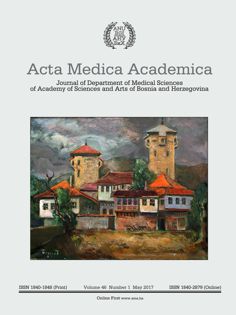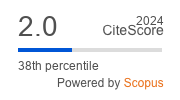Bacterial sepsis in neonates: Single centre study in a Neonatal intensive care unit in Bosnia and Herzegovina
DOI:
https://doi.org/10.5644/ama2006-124.181Keywords:
Sepsis, Neonatal intensive care unit, AntibioticsAbstract
Objective. The aim of the study was to evaluate the incidence, mortality, risk factors, aetiology and the susceptibility to antibiotics of the bacteria responsible for sepsis. Material and methods. A single centre, prospective, observational study, involving 200 neonates admitted over 12 months to the NICU of the University Children’s Hospital, Tuzla, Bosnia and Herzegovina. Results. The crude incidence of all neonatal sepsis was 68.0% (136/200) and that of late-onset sepsis (LOS) was 48.5% (97/200), yelding an incidence density of LOS of 41.6/1000 patient days. LOS represented the most frequent infection and was significantly more frequent than early-onset sepsis (EOS) (71.3% versus 28.7% p<0.001). The overall mortality was 14.0%, and 18.4% among infected neonates. Risk factors associated with LOS were: mechanical ventilation, intravascular catheter, surgical procedures, birth weight ≤1500 g, gestational age ≤ 28 weeks and Apgar score ≤ 3 at 5 minutes. Culture proven sepsis developed in 43.4% of neonates. Klebsiella pneumoniae and Enterococcus faecalis were the predominant bacteria. Gram-negative bacteria were susceptible to amikacin, imipenem and meropenem; gram-positive bacteria to vancomycin and amikacin. Conclusion. Neonatal sepsis in our NICU showed a high incidence rate, and gram-negative bacteria were predominant. Low gestational age, mechanical ventilation and an intra-vascular catheter were significantly associated with sepsis. It is necessary to develop a multidisciplinary approach for routine surveillance of nosocomial infections, to improve the asepsis of therapeutic procedures, and to implement the more appropriate use of antibiotics.





